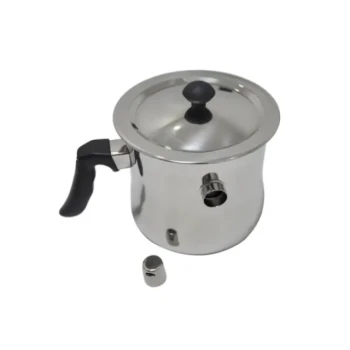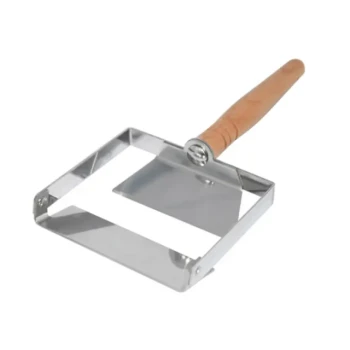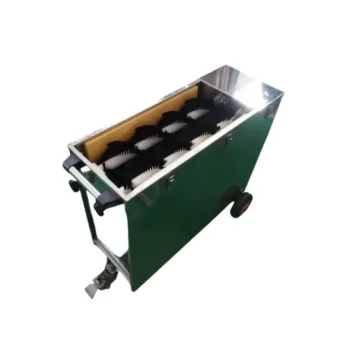In nearly all cases, liquid filling machines use a category of pumps known as positive displacement pumps. The most common types within this category are gear, lobe, and peristaltic pumps. The specific pump chosen is dictated by the liquid's viscosity, sensitivity, and the required level of sanitation for the operation.
The core principle is not about finding a single "best" pump, but about matching the pump's mechanism to the liquid's characteristics. Positive displacement pumps are the standard because they deliver a precise, repeatable volume with each cycle, which is the fundamental requirement for accurate filling.

Why Positive Displacement Pumps Dominate Liquid Filling
Positive displacement pumps are engineered to solve the core challenge of filling: delivering the exact same amount of product into every container, every time.
The Principle of Consistent Volume
A positive displacement pump works by trapping a fixed amount of fluid and then forcing (displacing) that trapped volume into the discharge pipe.
This mechanism ensures that for each rotation or cycle, a consistent volume is moved. This makes them inherently accurate for filling applications.
Handling a Wide Range of Viscosities
One of the key advantages of these pumps is their ability to handle liquids of varying thicknesses, from water-thin solutions to thick gels like honey or cream.
Unlike other pump types that lose efficiency with thicker fluids, a positive displacement pump's output remains stable, ensuring fill accuracy is maintained.
Ensuring Product Integrity
The gentle and consistent flow provided by many positive displacement pumps is crucial for sensitive or shear-sensitive liquids. This prevents the product from being damaged, aerated, or altered during the filling process.
Choosing the Right Pump for Your Product
While "positive displacement" is the category, the specific type of pump you choose depends entirely on the product you are filling.
Gear and Lobe Pumps for Thicker Liquids
Gear and lobe pumps are the workhorses for medium to high-viscosity liquids.
Their interlocking components create the force necessary to move thick products like sauces, creams, and honey smoothly and consistently. They are known for their reliability in larger-scale operations.
Peristaltic Pumps for Purity and Sanitation
Peristaltic pumps are the ideal choice when product purity is the highest priority.
In this design, the liquid is contained entirely within a flexible, sterile tube. Rollers press on the outside of the tube to move the fluid, meaning the pump's mechanical parts never touch the product.
The Advantage of Replaceable Tubing
The defining feature of a peristaltic pump is its disposable product path. After a production run, the tube can be easily and inexpensively replaced.
This design is ideal for pharmaceuticals, biotech applications, or corrosive liquids, as it eliminates the risk of cross-contamination and dramatically simplifies cleaning.
Understanding the Trade-offs
No single pump is perfect for every scenario. Understanding their limitations is critical for making an informed decision.
Mechanical Complexity and Maintenance
Gear and lobe pumps have moving parts that are in direct contact with the product. This necessitates more intensive cleaning procedures and can lead to wear over time, requiring maintenance.
Flow Rate and Pulsation
Some positive displacement designs, particularly peristaltic pumps, can produce a slightly pulsed flow rather than a perfectly smooth stream. While often negligible, this can be a factor in highly sensitive filling applications.
Tubing Limitations in Peristaltic Pumps
The flexible tube in a peristaltic pump is a consumable item with a finite lifespan. It must be replaced periodically, and its material must be chemically compatible with the product being filled.
Making the Right Choice for Your Goal
Your final decision should be guided by the unique requirements of your product and production environment.
- If your primary focus is high-viscosity products like honey or creams: A gear or lobe pump offers the robust, powerful, and consistent flow needed for these demanding applications.
- If your primary focus is sanitation, preventing cross-contamination, or handling sensitive liquids: A peristaltic pump is the definitive choice due to its completely isolated and disposable product path.
- If your primary focus is versatility across multiple product types: A peristaltic pump often provides the fastest and easiest changeover, minimizing downtime and cleaning requirements between runs.
Ultimately, selecting the correct pump is about matching its core mechanical advantage to the specific demands of your liquid product.
Summary Table:
| Pump Type | Best For | Key Characteristic |
|---|---|---|
| Gear / Lobe Pump | Medium to High-Viscosity Liquids (e.g., sauces, creams, honey) | Powerful, consistent flow for thick products |
| Peristaltic Pump | Sensitive Liquids, High Purity (e.g., pharmaceuticals, biotech) | Isolated product path; no contamination risk |
Need the right pump for your liquid filling operation?
As HONESTBEE, we specialize in supplying high-quality beekeeping supplies and equipment to commercial apiaries and distributors. We understand the precise demands of handling sensitive liquids like honey. Our expertise can help you select the ideal filling solution to ensure accuracy, protect your product's integrity, and maximize your operational efficiency.
Contact us today to discuss your specific needs and find the perfect pump for your application!
Visual Guide

Related Products
- Honey Convey Pump Economy Gear Pump for Viscous Liquid
- Honey Convey Pump Screw Honey Pump for Viscous Liquid
- Stainless Steel Manual Honey Press with Guard for Pressing Honey and Wax
- 10L Stainless Steel Electric Honey Press Machine
- Electric Honey Press Machine for Squeezing Honey Comb Press Equipment













